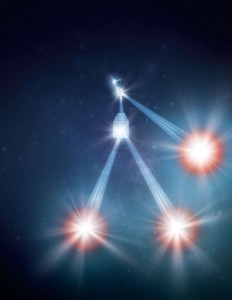Single-photon downconversion
- Post by: admin
- July 29, 2010
- No Comment

Single-photon pair sources based on the nonlinear process of spontaneous parametric downconversion are still a relatively young development. They are however probably one of the most successful tools of modern experimental science in terms of the massive impact they had on the field of quantum information processing. They provided the first bright source of entangled particles, which were then used in countless proof-of-principle experimental demonstrations which have shaped the field we’re working in. Examples include violations of Bell inequalities, the first quantum state teleportation, entanglement purification, multi-partite entanglement, quantum computing, both in the circuit and the cluster-state paradigm, the entire field of entangled-state quantum communication, and so on.
The hand-waiving explanation for the downconversion process is that a photon from a strong laser beam, which is focussed in the nonlinear crystal at the heart of the source, is “split” into a photon pair. However, the actual downconversion of a single photon has not been observed before. Until now. We have just demonstrated exactly this effect – the downconversion of a single photon, which was itself created as one photon of a downconverted pair. The experiment was carried out at IQC, in the group of Thomas Jennewein, and was published in Nature today.